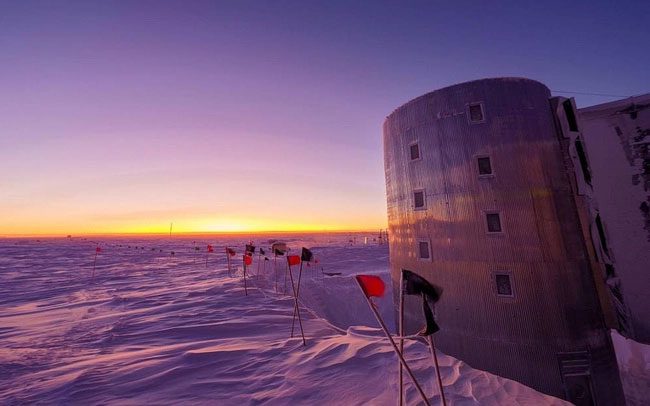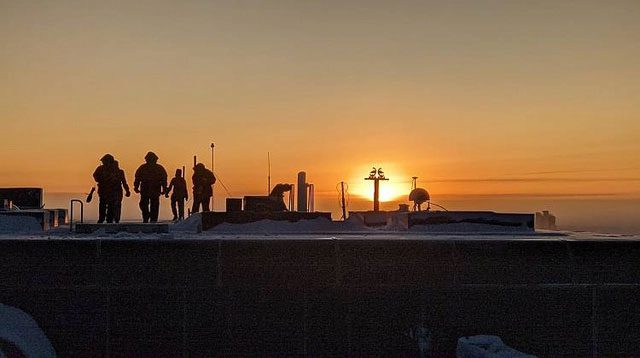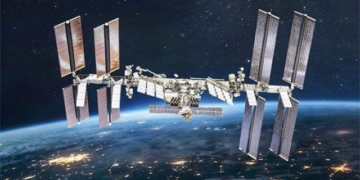A new study by the National Oceanic and Atmospheric Administration (NOAA) has found that the concentration of harmful chemicals damaging the ozone layer has decreased.
The Earth’s ozone layer protects life on our planet from harmful solar radiation.
By the end of the 20th century, human emissions of certain harmful chemicals began to affect the number of ozone molecules in the atmosphere. This led to a hole opening up over Antarctica each year due to complex meteorological and chemical processes.

The sun rises over the NOAA station in Antarctica, where the ozone hole opens annually. (Photo: Reuters)
In 1987, just seven years after scientists discovered that artificial chemicals were damaging the ozone layer, the Montreal Protocol was signed in an effort to limit the amount of harmful chemicals in the atmosphere.
Chemicals found in refrigerators, air conditioners, hairsprays, and industrial cleaning products began to be phased out to protect the ozone layer. With the consensus of all 197 countries, this became one of the first globally ratified treaties in United Nations history.
By early 2022, NOAA scientists discovered that the concentration of harmful chemicals had decreased by more than 50% in the mid-stratosphere compared to the 1980s. NOAA scientists stated that this is a “significant milestone” on the path to ozone layer recovery.
However, the recovery of the ozone layer is not a “final outcome,” as the concentration of these harmful chemicals in the atmosphere needs to continue to decrease.
The concentration of these chemicals over Antarctica, where an annual hole appears, is also decreasing but at a slower rate.

Staff at the NOAA station in Antarctica, where they monitor the ozone hole, observe the sunrise on the horizon. (Photo: Reuters)
This hole was larger than normal, exceeding the size of Antarctica itself, in 2021. NOAA predicts that the ozone layer over Antarctica could eventually recover “around the year 2070.”
Until it closes, the Copernicus Atmosphere Monitoring Service (CAMS) continues to monitor this hole. The ozone hole typically begins to form in the spring in the Southern Hemisphere, from August to October, reaching maximum size between mid-September and October, then returning to normal by the end of December.
This year, CAMS scientists have closely monitored the development of the hole since late August using a three-dimensional model.
Vincent-Henri Peuch, Director of Copernicus, stated: “The Antarctic ozone hole in 2022 began to develop in late August and has so far followed a similar trend to the previous decade in terms of area, total minimum column, volume deficit (mass that has been separated from the center of a galaxy), and minimum temperature.”
“According to our data from early September, the size of the ozone hole is within the average range. However, we will monitor very closely in the coming weeks as the ozone holes in 2020 and 2021 only began to become particularly significant later on.”



















































